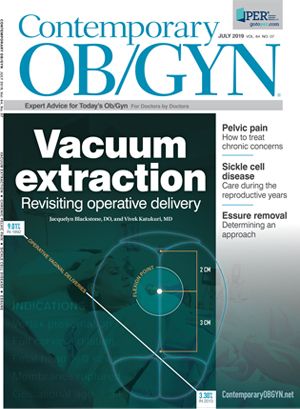How likely are adolescents to fill antibiotic prescriptions for STIs?
A recent study indicates that providers may need to rethink their intervention methods when counseling adolescents.
©4frame group - stock.adobe.com

Adolescents are disproportionately affected by sexually transmitted infections (STIs), but whether they actually fill antibiotic prescriptions provided in the emergency department (ED) setting is largely unknown. Researchers from Washington, DC, recently attempted to answer that question, as reported in JAMA Pediatrics.
For the retrospective cohort study, described in a researcher letter, visits to two EDs by adolescents aged 13 to 19 were analyzed. The focus was on encounters associated with a diagnosis of pelvic inflammatory disease (PID) for which outpatient antimicrobial treatment was prescribed between January 1, 2016 and December 31, 2017.
The primary outcome of the study was prescription filling of STI-related antimicrobial treatment and secondary outcomes included patient-level and visit-level factors associated with prescription filling. Filling data were acquired through a program in the hospital’s electronic health record that collects data from participating pharmacies and insurance plans.
During the study period, 696 ED visits resulted in an STI diagnosis. Outpatient prescriptions for antimicrobial treatment were given to 208 patients with such diagnoses (cervicitis/urethritis n=65; 31.2%) or (PID n=143; 68.8%). Of the prescriptions, 57.7% (95% CI 50.9%-64.5%) were filled. Using multivariable analysis, the only factor associated with prescription filling was hospital admission (73.7% vs 54.1%; AOR 2.3; 95% CI 1.0-5.0). The authors noted that patients admitted likely had more severe symptoms, and as a result, they may have been more motivated to fill a prescription for symptom relief.
The authors believe their findings indicate that more novel intervention needs to be explored to ensure that prescriptions given to adolescents for STIs are being filled. In-depth conversations about the necessity of antibiotic treatment for STIs could be beneficial, as could a consultation with an adolescent medicine specialist. Future studies should focus on understanding the barriers that underly prescription filling for adolescents to promote STI-related treatment adherence.

Link found between delayed prenatal care and congenital syphilis rates
August 7th 2024A study presented at the Infectious Disease Society for Obstetrics and Gynecology 2024 Annual Meeting found an increase of 4 days between diagnosis and treatment among pregnant patients with congenital syphilis vs those without congenital syphilis.
Read More
Reducing costs and increasing accessibility key to enhancing STI testing among youth
August 6th 2024A study presented at the Infectious Disease Society for Obstetrics and Gynecology 2024 Annual Meeting highlights the importance of affordability and convenience in boosting STI test uptake among adolescents and young adults.
Read More
